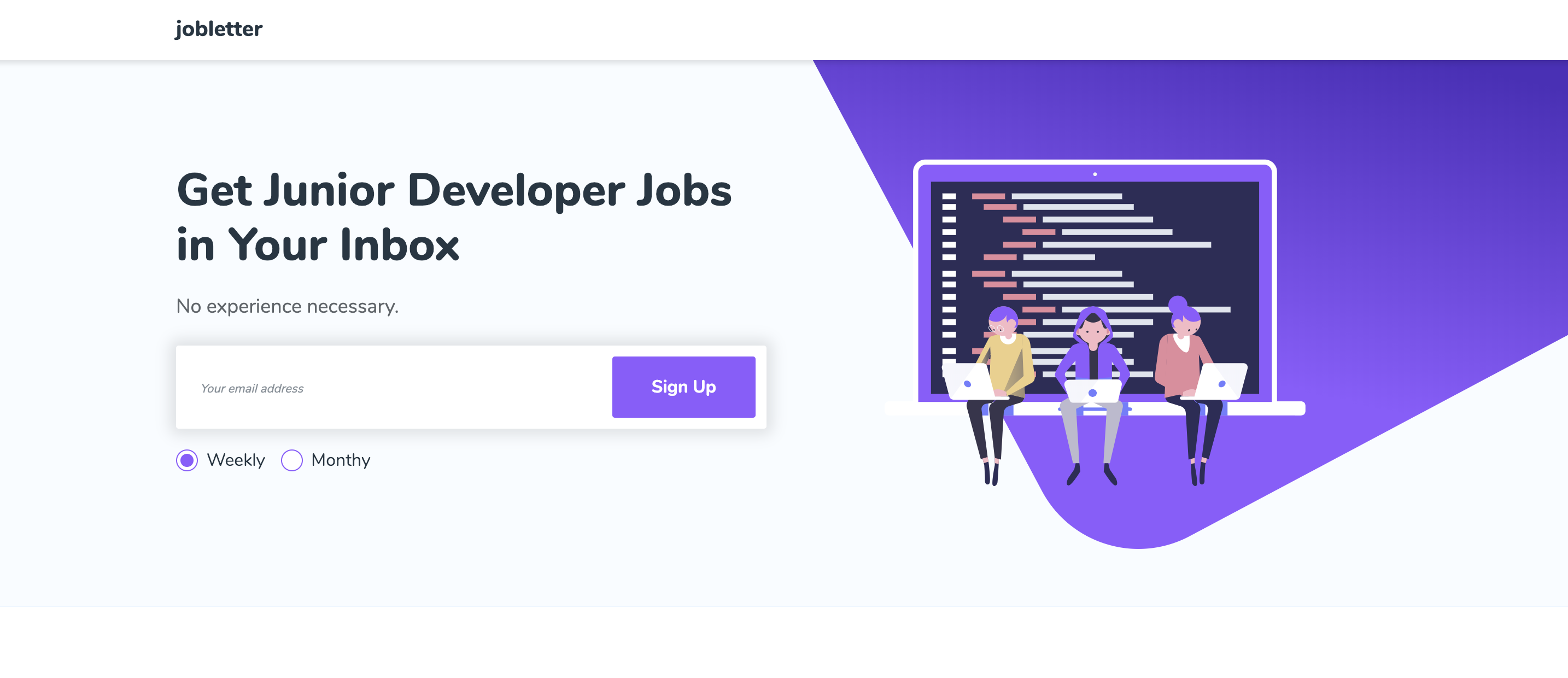Seven weeks ago, a friend and I started writing a newsletter for junior devs and strategizing about stuff like open rates and content strategies.
But if you’ve followed any of this before now - or seen those link titles, you’ll notice we go from 100 subscribers in two weeks to 250 in three all the way up to… 300 users after almost two months. What happened?
Why We Hit a Plateau
There are a few reasons growth slowed.
1. We Focused on the Product
We’ve spent a few weeks getting into the groove of producing the letter - finding the right mix of jobs, understanding how our audience wants them presented and put into context, sussing out our individual roles in all this.
2. The Maw is Hungry
But during all that we didn’t keep our writing or promotation efforts up. The amount of focus and content necessary for a dedicated blog makes the strategy an always-on, always-hungry type of thing, where the paper shark constantly needs more word fish, or something. Mixed metaphors are a common product of the pressure to feed said maw.
3. We Need a Paradim Shift
Finally, the sorts of low-stakes, high-input content marketing strategy that we’re working on now isn’t some perfect perpetual motion machine of user acquisition and engagement. It requires a lot of effort from us for each shot. We don’t have that whole users-converting-other-users gravy yet.
But that also ties in to whether we need to do anything more than grind? The natural size of the list will depend on how we can monetize it and whether we really need a large list to see the return we’d like.
So what are our monetization strategies? I’m so glad you asked.
Monetization Stategies
There are a few different avenues we’re exploring for monetizing the email list.
1. Charge for Job Listings
Once we reach a certain size (probably north of 5,000 users at least) we can start charging employers for listing their posts. Of course right now we hand-curate them, so we’d have to be careful to only accept listings that met our thresholds for quality and relevance.
2. Advertise Sponsored Jobs / Articles / Products
Having some sort of job product or third-party service that we could advertise as a sponsor would be a great method of making the list financially sustainable. It’s true “sponsor” is a bit of a euphemism, but I think it’s semantically appropriate if the sponsoring company’s involvement basically ends at the link or other content that they’re providing - pointedley not providing them either a full-fledged visual ad or lengthy editorial copy.
3. Launch our own Job Board
This is appealing, essentially using Jobletter as a vehicle to drive traffic to the actual business, which would be a job board for junior developer positions. The great part of this is - and I’m going to engage in some rigorous forecasting here - is that assuming we could keep a 10% or higher CTR (not crazy considering the letter is its own product), we turn the job board on and instantly start feeding it a couple hundred views a week (assuming we keep growing the list at a reasonable rate). That’s not crazy traffic, but given the interest we’ve seen in the letter, those views could be the initial seed to feed the more engagement-laden parts of the board: The board would have more listings, links, and general pieces of content to share around the web. It would be more “visible”, both to indexing engines and social networks, than the newsletter, which doesn’t drive much growth itself and has a discovery problem.
What We Won’t Do
One thing we’re specifically not considering is selling the list, or any of our subscribers’ information. Though it doesn’t take a martech genius to know that it wouldn’t be super valuable in its current state, if we had a larger, more detailed (and therefore profitable) list that could change the economic calculus - but not our position. As cool and sci-fi noir-y as “information broker” sounds, in practice it just feels skeezy to sell data.
Conclusion
So the most recent bulletin from our side project experiment - if it’s not “All Quiet on the Western Front” - is that we’re slowly growing, but growing. And because we’re looking at possibilities like using the newsletter to launch a job board, we could potentially be OK with taking to time to small bore this up to an acceptable number.
Until, of course, we hit on that magical idea that will prove either a lead magnet or perhaps simply a more sustainable well of content to draw from.
Stay in Touch
If getting high-quality, hand-curated, early-career-dev jobs sounds appealing to you - or you just want to follow along the bootstrapping-a-side-project business at home, sign up for Jobletter below.
And check back - I’ll be writing more in the coming weeks.

